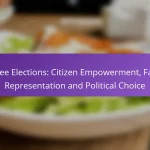Social media awareness campaigns are crucial for connecting with audiences and driving engagement through compelling visuals and targeted messaging. By employing effective engagement strategies such as interactive content and user-generated contributions, organizations can foster community involvement and enhance their outreach efforts. Understanding the unique features of each platform is essential for maximizing impact and achieving campaign goals.
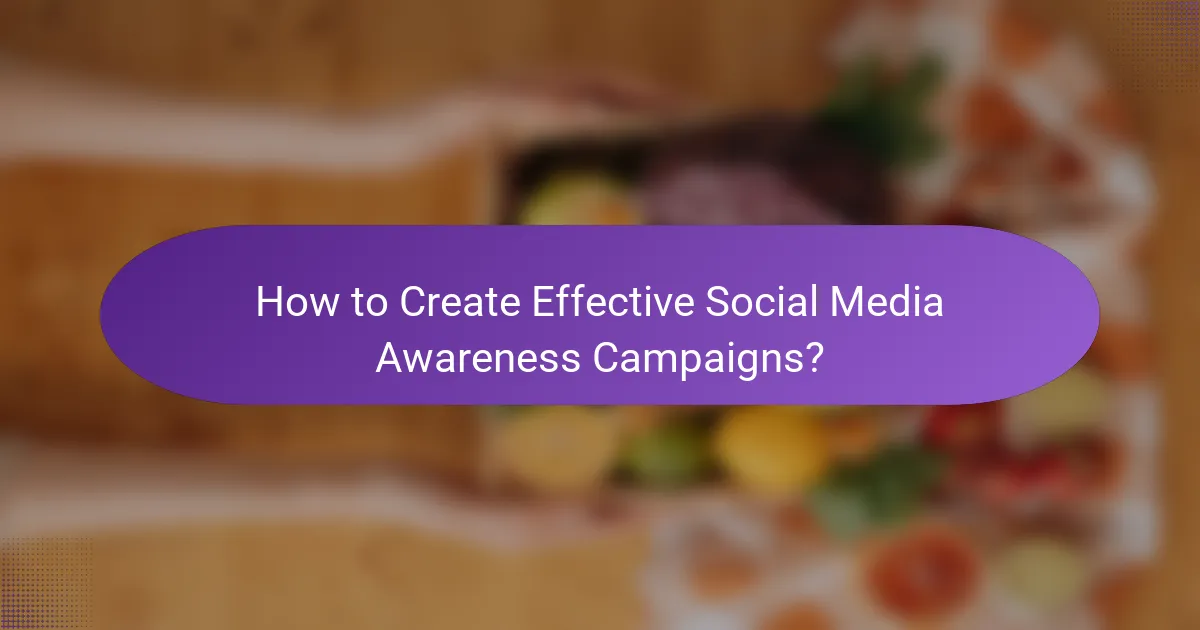
How to Create Effective Social Media Awareness Campaigns?
Creating effective social media awareness campaigns involves understanding your audience, using compelling visuals, and measuring your results. These elements help ensure your message resonates and drives engagement.
Define target audience
Identifying your target audience is crucial for a successful campaign. Consider demographics such as age, gender, location, and interests to tailor your message effectively.
Utilize tools like social media analytics and surveys to gather insights about your audience. This data will help you create content that speaks directly to their needs and preferences.
Utilize engaging visuals
Engaging visuals are key to capturing attention on social media. Use high-quality images, infographics, and videos that align with your campaign’s message.
Incorporate brand colors and logos to maintain consistency and enhance recognition. Aim for visuals that evoke emotions or provoke thought, as these are more likely to be shared.
Leverage influencer partnerships
Partnering with influencers can amplify your campaign’s reach. Choose influencers whose audience aligns with your target demographic to ensure authenticity.
Collaborate on content that feels natural and resonates with their followers. This can include sponsored posts, takeovers, or co-created content that highlights your campaign’s goals.
Track campaign performance
Monitoring your campaign’s performance is essential for understanding its impact. Use analytics tools to track metrics such as engagement rates, reach, and conversions.
Establish key performance indicators (KPIs) before launching your campaign to measure success effectively. Regularly review these metrics to identify trends and areas for improvement.
Adjust strategies based on feedback
Feedback from your audience can provide valuable insights for refining your campaign. Encourage comments and interactions to gather opinions and suggestions.
Be prepared to adapt your strategies based on this feedback. Making timely adjustments can enhance engagement and improve overall campaign effectiveness.
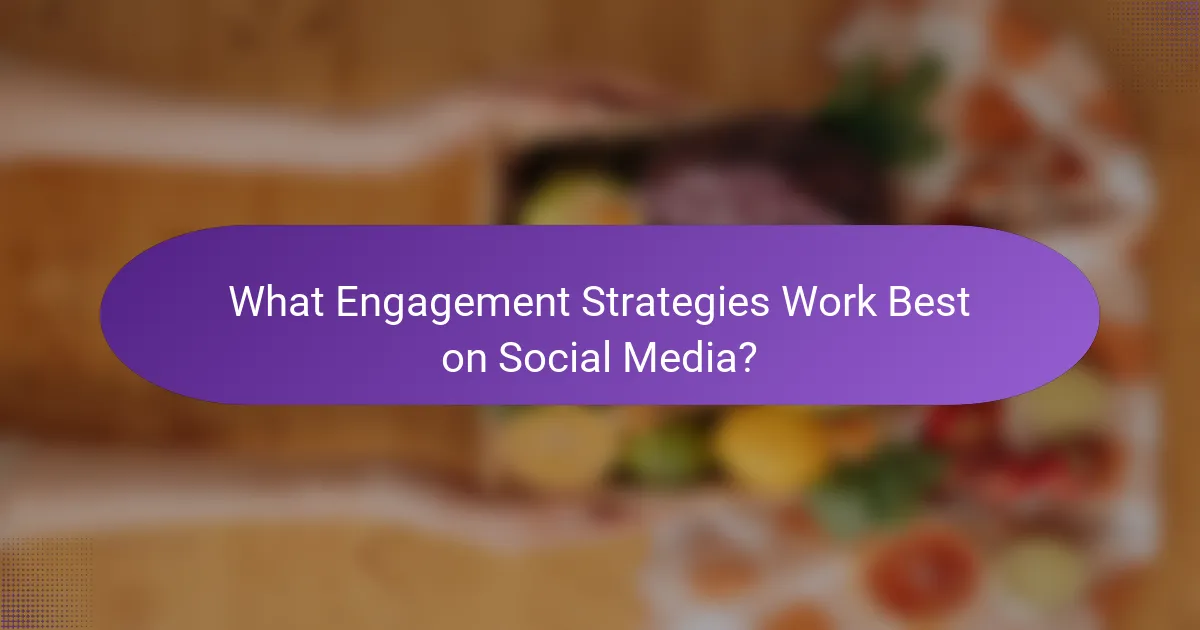
What Engagement Strategies Work Best on Social Media?
Effective engagement strategies on social media include interactive content, live Q&A sessions, user-generated content, and polls or surveys. These methods foster community involvement and enhance brand visibility, making them essential for successful outreach campaigns.
Use interactive content
Interactive content, such as quizzes, games, and infographics, captivates audiences and encourages participation. This type of content not only boosts engagement but also provides valuable insights into user preferences and behaviors.
To implement interactive content, consider tools like Canva for infographics or Typeform for quizzes. Aim for content that aligns with your brand’s message and resonates with your target audience’s interests.
Host live Q&A sessions
Live Q&A sessions allow brands to connect directly with their audience in real-time, fostering a sense of community. These sessions can be hosted on platforms like Facebook Live or Instagram Live, where followers can ask questions and receive immediate responses.
When planning a live session, promote it in advance to maximize attendance. Prepare a list of potential questions to guide the discussion and ensure you address audience queries effectively.
Encourage user-generated content
User-generated content (UGC) involves encouraging your audience to create and share their own content related to your brand. This strategy not only increases engagement but also builds trust, as potential customers often value peer recommendations over traditional advertising.
To foster UGC, create specific hashtags for campaigns and offer incentives, such as contests or giveaways. Highlighting user content on your official channels can further motivate participation and strengthen community ties.
Implement polls and surveys
Polls and surveys are effective tools for gathering feedback and gauging audience preferences. They can be easily integrated into social media platforms, allowing users to share their opinions quickly and effortlessly.
When creating polls, keep questions clear and concise. Use engaging visuals to attract attention, and consider sharing the results to show your audience that their input is valued. Regularly conducting polls can help you stay attuned to changing preferences and trends.
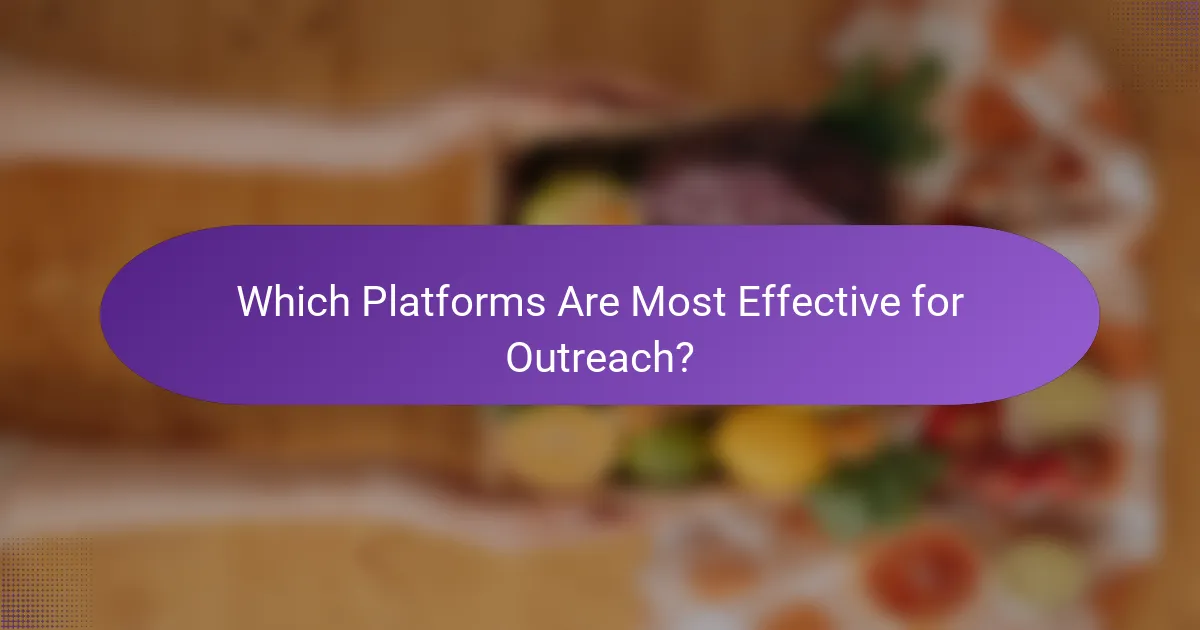
Which Platforms Are Most Effective for Outreach?
The effectiveness of social media platforms for outreach depends on your target audience and campaign goals. Each platform offers unique features that can enhance engagement and broaden your reach.
Facebook for broad reach
Facebook is ideal for reaching a diverse audience due to its vast user base, which spans various demographics. It allows for targeted advertising, enabling campaigns to focus on specific groups based on interests, location, and behavior.
To maximize outreach on Facebook, create engaging content such as videos, polls, and live streams. Consider using Facebook Ads to boost visibility, as they can significantly increase engagement rates when properly targeted.
Instagram for visual storytelling
Instagram excels in visual storytelling, making it perfect for brands that can leverage high-quality images and videos. The platform’s emphasis on aesthetics allows campaigns to create a strong visual identity and connect emotionally with followers.
Utilize features like Stories, Reels, and IGTV to showcase products or share behind-the-scenes content. Engage with users through interactive elements like polls and questions to foster community and enhance outreach.
LinkedIn for B2B connections
LinkedIn is the go-to platform for B2B outreach, focusing on professional networking and industry-specific content. It is effective for establishing thought leadership and building relationships with other businesses.
Share informative articles, industry insights, and case studies to engage your audience. Joining relevant groups and participating in discussions can further enhance visibility and foster connections with potential clients or partners.
Twitter for real-time engagement
Twitter is known for its real-time engagement capabilities, making it suitable for campaigns that require immediate interaction. The platform’s fast-paced nature allows brands to participate in trending conversations and respond quickly to audience inquiries.
Use hashtags strategically to increase the discoverability of your content and engage in relevant discussions. Regularly posting updates and responding to mentions can help maintain a dynamic presence and strengthen outreach efforts.

What Metrics Should You Track for Campaign Success?
To measure the success of your social media campaigns, focus on key metrics that reflect engagement, reach, conversions, and growth. Tracking these metrics helps you understand your audience’s behavior and the effectiveness of your strategies.
Engagement rate
Engagement rate is a critical metric that indicates how actively your audience interacts with your content. It is typically calculated by dividing the total engagement (likes, comments, shares) by the total followers or reach, then multiplying by 100 to get a percentage.
A healthy engagement rate varies by platform but generally falls between 1% to 5%. High engagement suggests that your content resonates well with your audience, while low engagement may signal the need for content adjustments.
Reach and impressions
Reach refers to the total number of unique users who see your content, while impressions count how many times your content is displayed, regardless of whether it was clicked. Both metrics are essential for understanding the visibility of your campaign.
Monitoring reach helps you gauge the size of your audience, while impressions indicate how often your content is being viewed. Aim for a growing reach alongside consistent impressions to ensure your message is being seen by a wider audience.
Conversion rate
The conversion rate measures the percentage of users who take a desired action after engaging with your content, such as signing up for a newsletter or making a purchase. This metric is crucial for assessing the effectiveness of your campaign in driving specific outcomes.
To calculate conversion rate, divide the number of conversions by the total visitors and multiply by 100. A typical conversion rate for social media campaigns ranges from 1% to 3%, but this can vary based on industry and campaign goals.
Follower growth
Follower growth tracks the increase in your social media followers over time, reflecting your brand’s expanding reach and influence. A steady increase in followers indicates that your content is attracting interest and engagement.
Monitor follower growth on a monthly basis to identify trends and assess the impact of your campaigns. Aim for a consistent growth rate, and be cautious of sudden spikes, which may indicate temporary interest rather than sustained engagement.
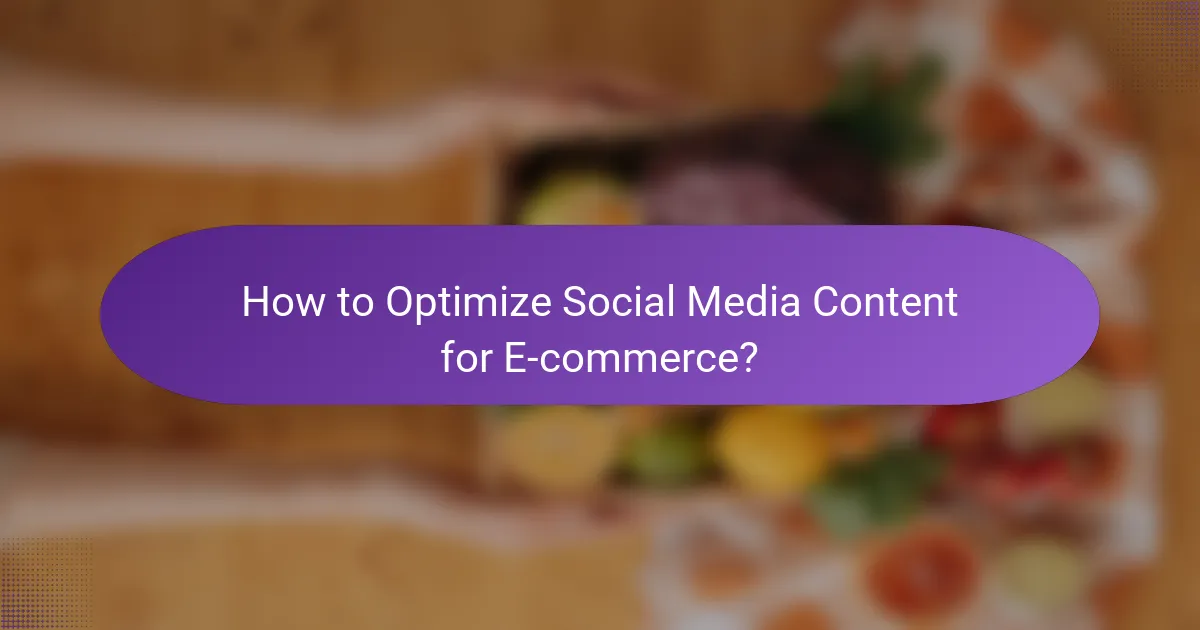
How to Optimize Social Media Content for E-commerce?
To optimize social media content for e-commerce, focus on visually appealing elements and clear messaging that drives customer action. Engaging content can significantly enhance brand visibility and conversion rates.
Use high-quality product images
High-quality product images are essential for attracting potential customers on social media. Clear, well-lit photos that showcase your products from multiple angles can create a strong first impression and encourage users to engage with your brand.
Consider using lifestyle images that depict your products in real-life scenarios, as these can help customers envision how they would use the items. Aim for images that are at least 1080 pixels wide for optimal display on platforms like Instagram and Facebook.
Incorporate clear calls-to-action
Clear calls-to-action (CTAs) guide users on what steps to take next, whether it’s visiting your website, signing up for a newsletter, or making a purchase. Use direct language that creates urgency, such as “Shop Now” or “Limited Time Offer.”
Position your CTAs prominently within your posts or stories, and ensure they stand out visually. Experiment with different phrases and placements to see which ones resonate best with your audience, and monitor engagement metrics to refine your approach.


